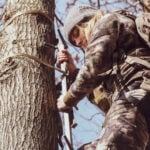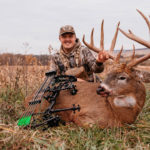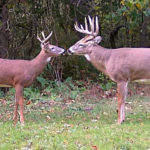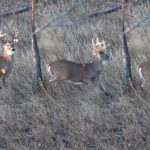Talk to many bowhunters today and this is when they’ll say they most want to be in the woods.
True, peak rut is a great time to be in your tree stand from sunrise to sunset. It’s when you’re likely to cross paths with the local monster that many people have spotted after dark, but very few have seen while seated in a tree stand. The peak of the rut makes those big bucks goofy.
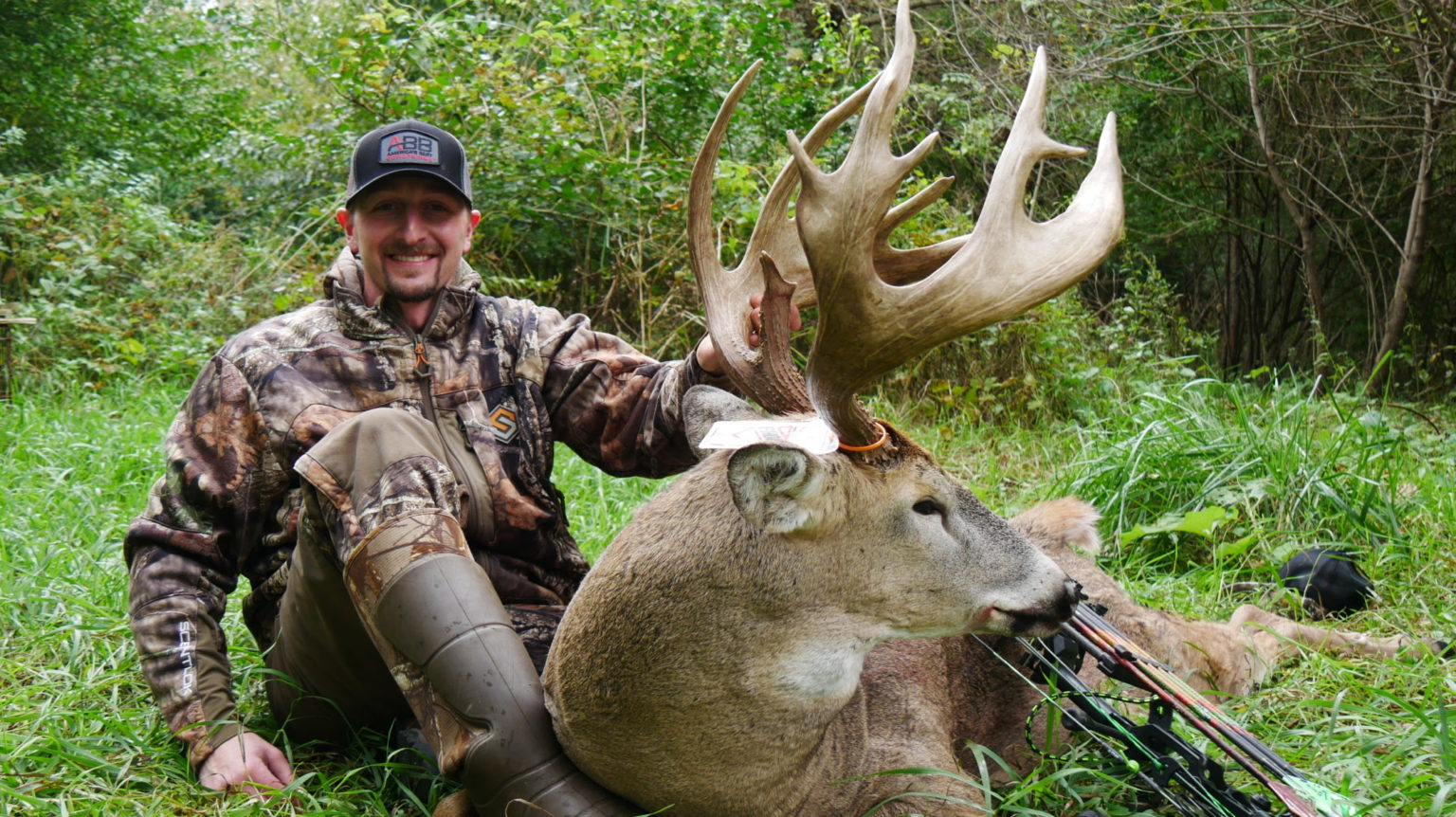
Unfortunately, peak rut is also the time when you might encounter lock down. That’s when the chase has ended and a big, mature buck has successfully won the heart of the doe-of-the-moment.
The buck and his doe lock down together to breed, and neither moves around much, if at all, for a day or two. It can be a lonely time on stand for a bowhunter – and still be the peak of the rut.
Eager bowhunters would do well to expend just as much effort during the early part of the rut in mid to late October as they do during the peak rut in November.
You’re not necessarily going to get the king of the woods – those guys know better than to move around during daylight at this time of year – but you certainly have a good chance of encountering a heavy 3.5 year old with respectable headgear.
Why’s that? Well, the pre-rut period is when there is a lot of buck activity. They’re rubbing trees. They’re making deer scrapes. They’re sparring.
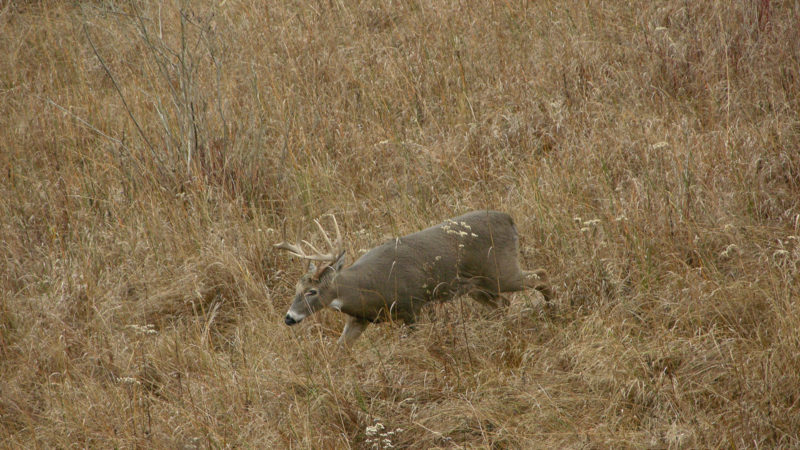
They’re wandering all over the place looking for that first, hot doe. You’ll know when the early rut is on because the woods suddenly will come alive with bucks.
A few years back, a deer hunter was hunting a tree stand in a woodlot that he felt sure was a prime location because of all the trails, deer droppings and old buck rubs he found during his summer scouting missions.
On his hunts in early October, he’d spot one or two bucks one day and none the next. It sure didn’t seem like the place was on fire early on.
One day around Oct. 20, he was walking across a huge grass field to his tree stand in the dark when his headlight caught a patch of bare earth off the side of the trail he followed through the woods.
A fresh deer scrape! He squeezed a little doe-in-heat scent on the dirt and then proceeded to his tree stand.
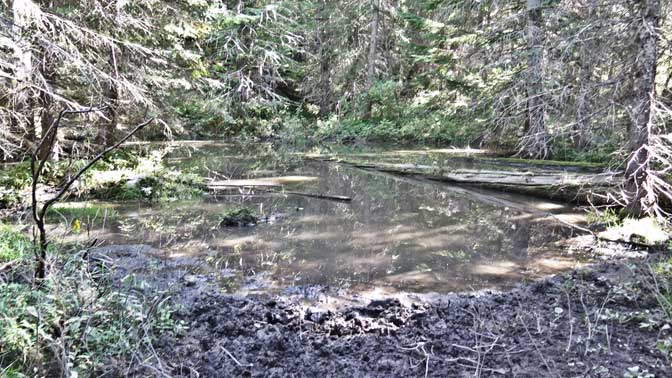
Shortly after sunrise, he caught some deer movement out in the field to his right. He turned his head and watched a buck trot into the timber and right up to the deer scrape.
He put his nose to the ground, pawed the dirt a few times, then started to move off through the woods, away from his position. That’s when he burped at him with a grunt call.
The buck’s head snapped to attention and he glared in the deer hunter’s direction. In the slanting morning light, he saw a glob of saliva drop from his jaw.
With an air of defiance, the young eight-pointer stomped through the leaves as he slowly circled downwind of his perch, about 50 yards away.
When he went behind a tree, he grunted again. The buck continued his circle and when he went behind another tree, he gave him another grunt, because he thought he was growing wary of not seeing the deer he’d been hearing.
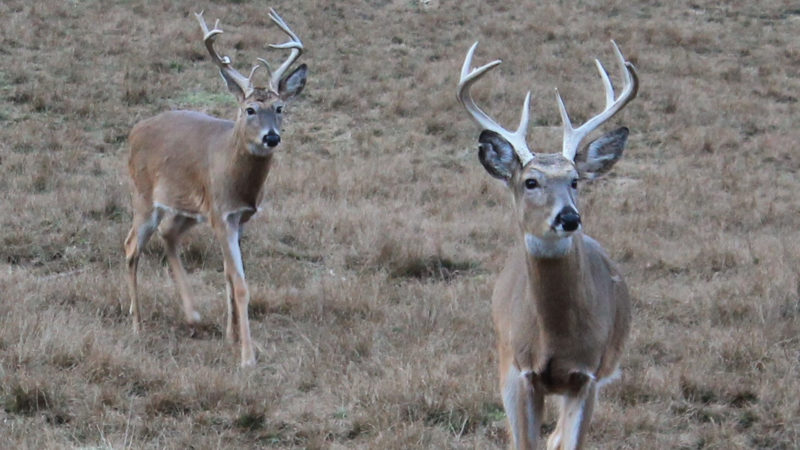
The next time the buck appeared, he was stomping away from me and he grunted yet again. That last grunt call was almost immediately followed by a loud snort that seemed like it came from right under his tree stand.
Startled, he looked behind him and saw a big, heavy 10-pointer bound away about 40 yards before stopping to look back at him.
He’d been so focused on the young buck that he never noticed the big guy coming to his grunt calls. And judging by where the snort came from, he’d walked to within easy bow range.
In retrospect, that buck’s approach is probably what caused the other one to head away from me.
Two more bucks cruised the woodlot that morning. They both trotted through with their noses to the ground and no amount of calling could shake their concentration. Neither came close enough for a shot.
Three days later, however, he tagged a 130-class nine-pointer from that same tree stand. And it was not one of the four bucks he saw three days prior.
Hunt Deer Scrapes and Buck Rub Lines
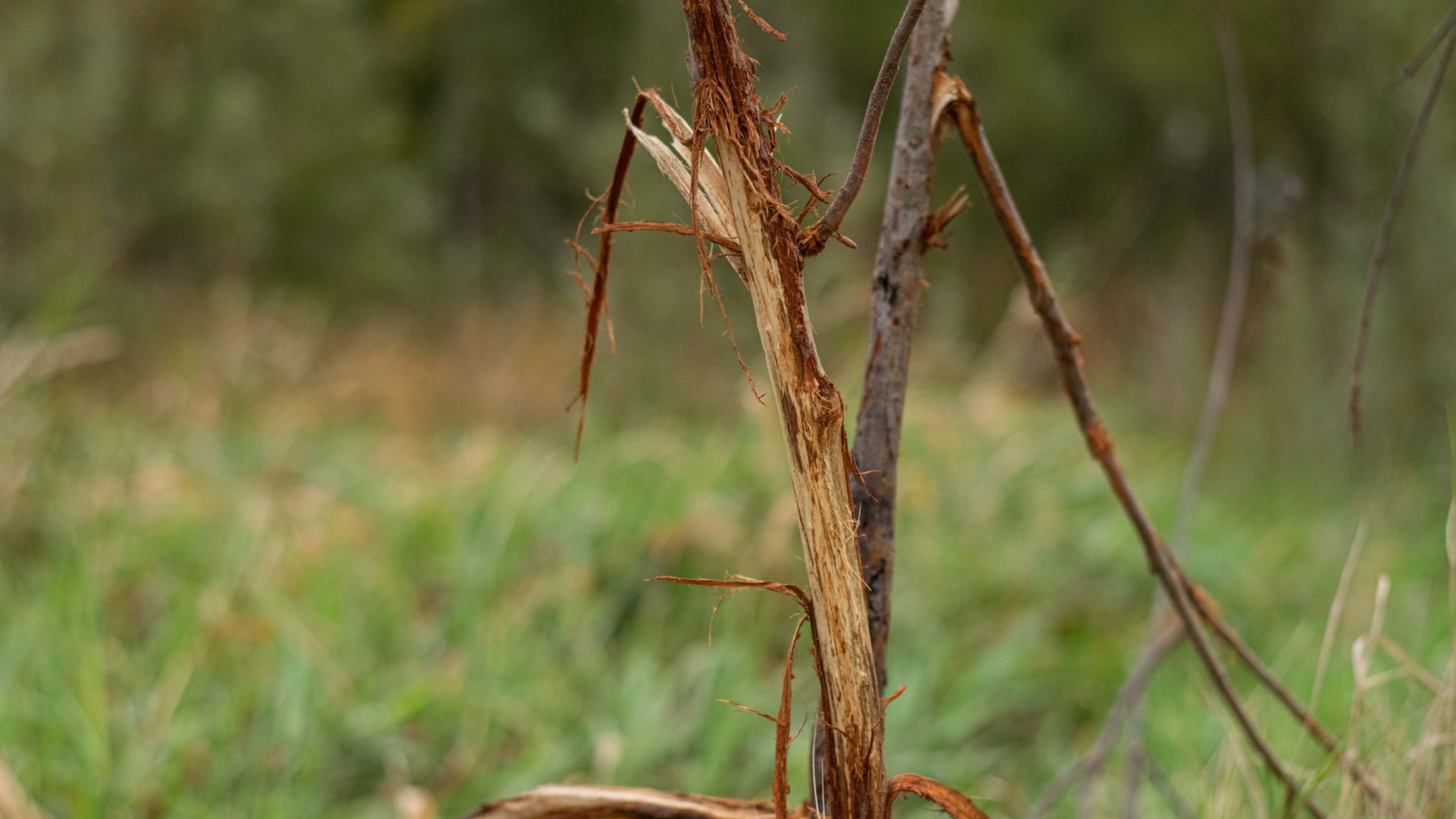
In the early rut, bucks spend a lot of time making deer scrapes and rubbing trees with their antlers to mark their territories and advertise their state of sexual readiness.
Since there aren’t a lot of does coming into heat just yet, the bucks visit these markers frequently to keep them fresh and to see if any intruding bucks or receptive does have entered their home range.
Actually, if you’ve ever noticed, scraping and rubbing activity actually decreases as the rut progresses and more and more does come into heat. A buck’s signposts are meaningless at this point.
Once he finds a receptive doe, he’s going to follow that deer wherever she takes him – which might be far, far from the deer scrapes and buck rubs he was making in October.
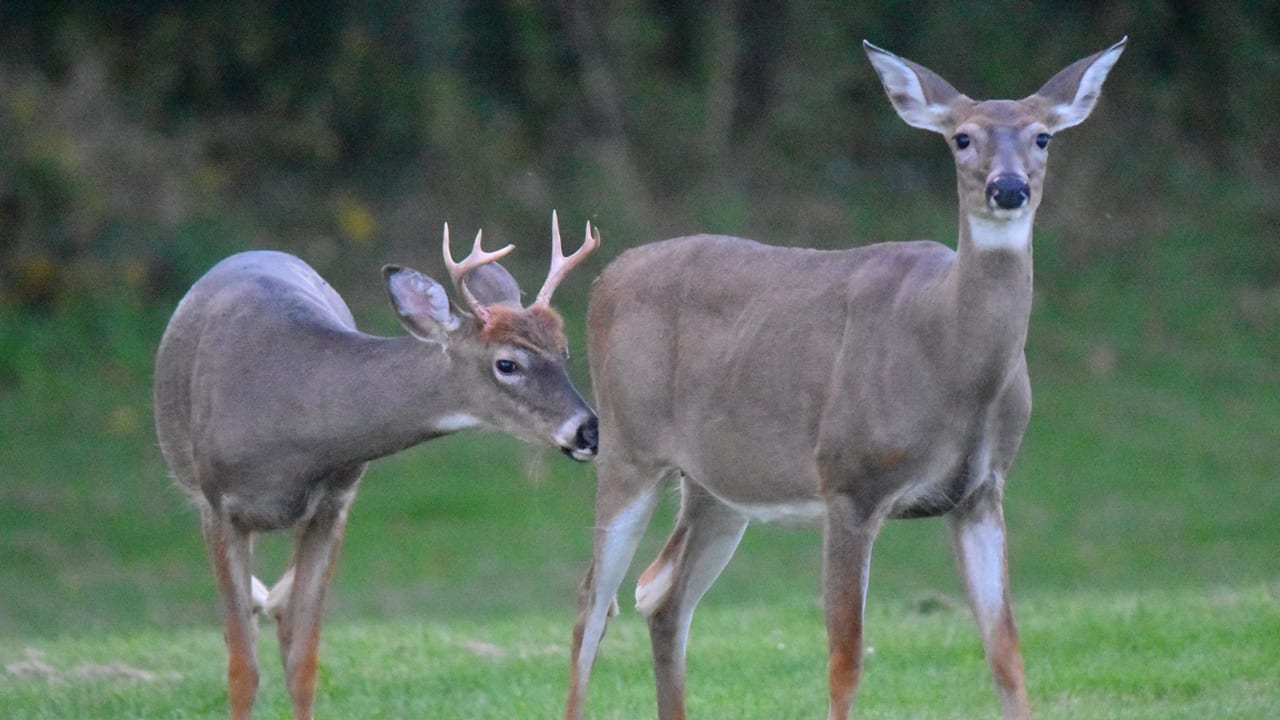
For now though, when new deer scrapes seem to be showing up every day and more and more trees are being shredded, work them. They are evidence that bucks are around and, while there are no guarantees, they give you an idea of where you just might intercept one.
Generally, you’re going to find buck rubs and deer scrapes along main travel corridors used by the main herd – does, yearlings and immature bucks.
If that’s what you’re after, then set up your tree stand or ground blind nearby.
Mature bucks, however, forge their own paths through the woods. They don’t walk the same trails
As all the other deer. So if you find a deer scrape or rub line that doesn’t seem to be on a defined deer trail, pay attention to it. It just might be the calling card of the big boy.
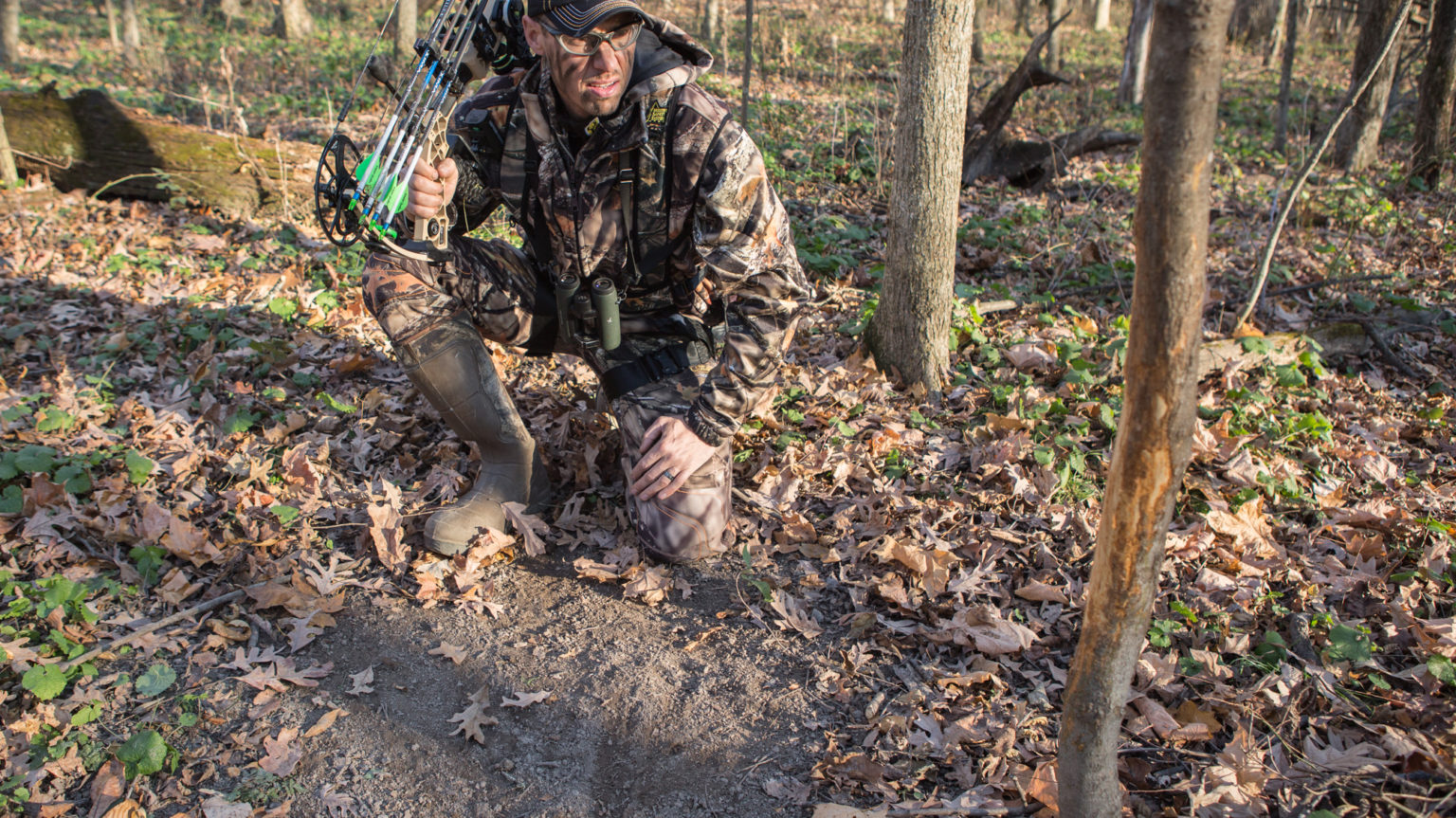
Whenever you hunt a deer scrape, don’t just set up right on top of it. Get downwind. When the owner of that deer scrape returns to freshen it up, you can bet money he’ll approach it from downwind.
Even more likely, that buck might swing by the deer scrape to check it for a doe’s scent simply by passing it on the downwind side and taking a whiff.
He doesn’t have to walk right up to it to check it. And during daylight hours, quite frankly, he probably won’t.
Place your tree stand or ground blind 20 to 30 yards downwind of the deer scrape and you’re in business.
You can never tell how far downwind from a deer scrape a buck will pass to check it, but some deer hunters have found being 20 to 30 yards away will either put you right on top of him, or at least close enough to get him with a bow.
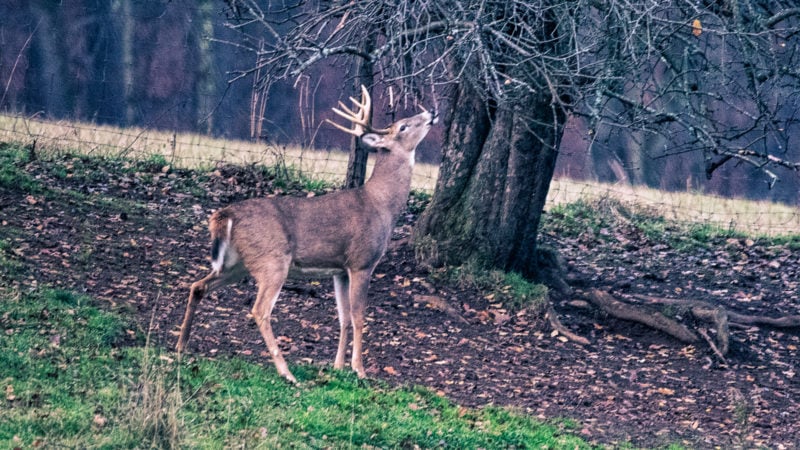
A rub line is different. It’s a linear signpost, rather than a single spot, like a deer scrape. Bucks will walk the line, raking trees with their antlers along the way.
And so some deer hunters will hunt just about right on top of it. Deer hunters will place their tree stand within shooting distance of the line, again on the downwind side to avoid a buck’s nose.
Find the does
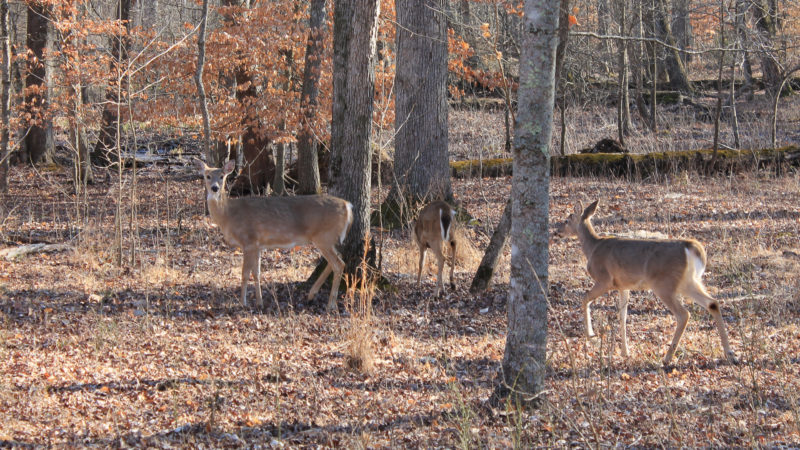
If you’re not a gambler, and you don’t like hunting near a deer scrape hoping a buck shows up, then hunt the does.
Find the bedding and feeding areas and travel routes used by the does in your area and you will find the bucks. They will show up. It’s what the rut is all about, after all.
This is the early rut. This is when bucks are cruising their core areas day and night in search of a hot doe.
They know where the does like to hang out and so you can bet those places will be on their route.
Food sources are likely to be varied in mid October. Farm crops might still be standing, or they might not. In areas where corn is prevalent, does and their fawns pretty much live in it when it’s standing.
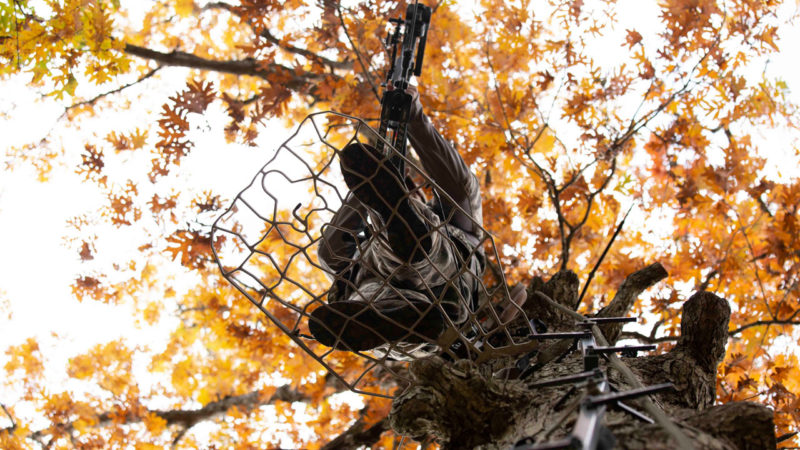
A tree stand along the edge of a field of standing corn, or a ground blind along a deer trail out in the middle of the field, are good bets.
If the corn already has been cut, however, then you should focus more of your attention in the timber, where the deer are bedding.
Soybeans are a favorite delicacy for deer when they are green and juicy in late summer. By mid October, however, the beans are drying out and turning yellow and brown.
Once they reach this stage, deer usually look for something else to eat. I don’t pay much attention to fields of standing or cut soybeans when you’re searching for does in the early rut.
If you’ve got oaks in your hunting area, odds are they’re dropping their acorns as the early rut commences.
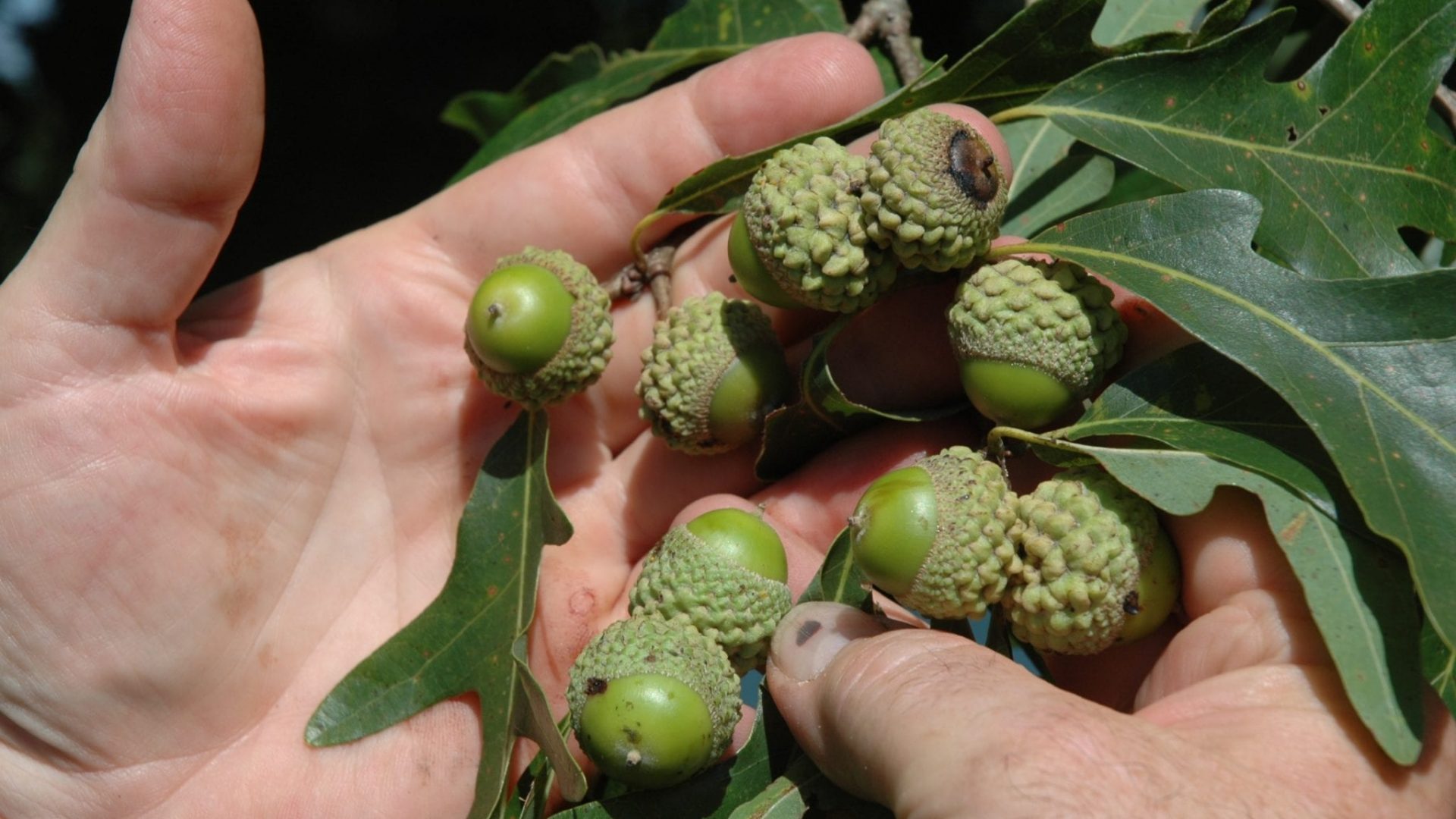
Some deer hunters will abandon all other food sources and hunt in and around oak trees when they first start dropping their acorns.
We don’t know if deer are just interested in eating something new or if the acorns fill some special role in their diet.
It seems like when acorns start tumbling out of the trees, the ground they hit is where I can count on finding the does and fawns – and, subsequently, the bucks.
Several years ago, a couple of deer huntersI hung a tree stand at the bottom of a wooded ravine that separates two crop fields. Because of the steep hillsides they have to walk to get to the tree stand, they call it “The Hole.”
They put The Hole tree stand in because there was a well-worn trail right in front of the tree that holds it. What they didn’t discover until we started hunting the tree stand, though, was the small cluster of four white oak trees 30 yards to the left of it.
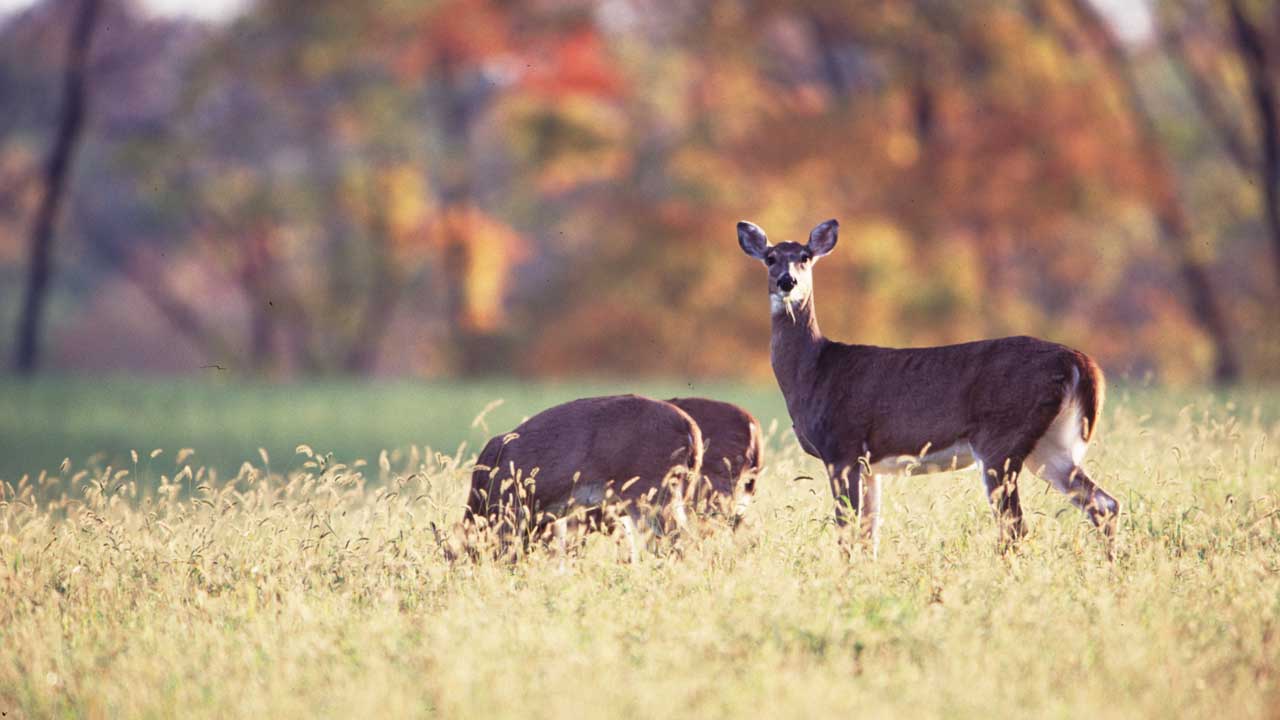
When those white oaks start dropping their large, luscious acorns – usually around the second week of October – The Hole becomes the center of the deer universe on this particular farm.
And when they discovered that, they noticed bucks frequently showing up to sniff around, butt heads and chase the does. They’ve shot several bucks from The Hole tree stand over the years that were cruising for does that just happened to be locked in on those white-oak acorns.
Deer Calling
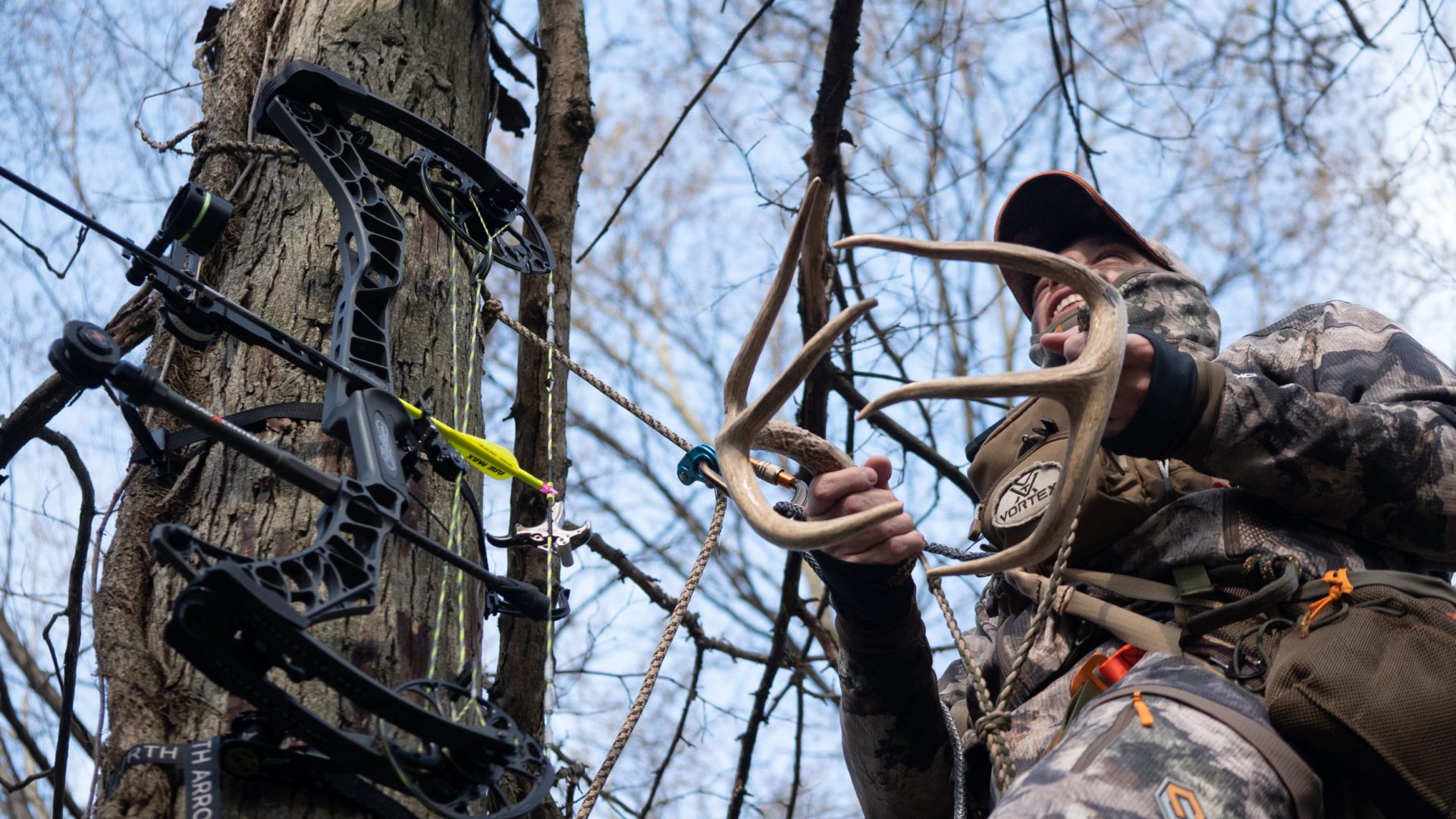
The early rut is some deer hunters absolute favorite time of the season to try to call in a buck. This is when bucks seem to be most responsive.
Again, that’s probably because there just aren’t a whole lot of receptive does out there. So competition is high for the few does that are in heat.
Primarily, some deer hunters rely on two deer calls during the early rut – a can-style, doe-in-heat bleat and a grunt tube. Two years ago, one deer hunter added a snort-wheeze call after he watched a buck chasing two does in mid October actually do a snort-wheeze right in front of him.
Last season, he snort-wheezed a nice 8-pointer to within 5 yards of his tree stand twice in the same morning during the early rut. He didn’t shoot him, though, because he wasn’t quite big enough. Light rattling at this time also can be effective.
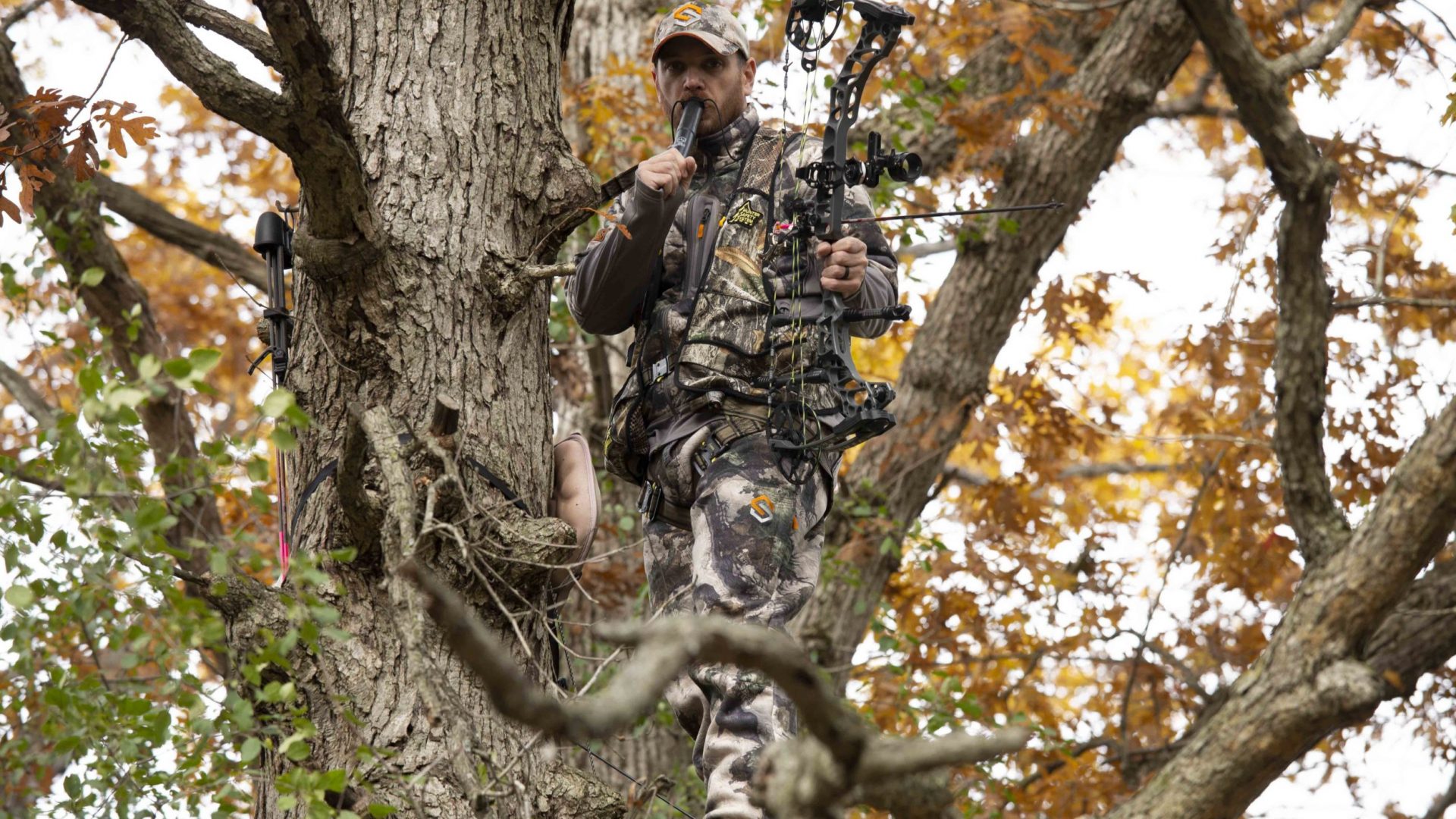
But the doe-in-heat bleat and the buck grunt are some deer hunters bread and butter calls.
If you see a buck slinking through the woods, and it doesn’t look as if he’s going to come within bow range, first give him a grunt call to see how he reacts. Only call when the deer’s head is out of sight or at least when he’s not looking my way.
Deer have an incredible ability to pinpoint sound. If a buck’s looking in your direction and you grunt call, he’s going to know exactly where the sound came from. And if there’s no deer in sight, the jig is up.
If the buck doesn’t react to a grunt, hit him with the doe bleat. Your first goal is just to get his attention. Once you have it, wait to see what he does. Hopefully, he’ll start working toward you.
And as long as he’s coming you way, don’t call again. You want him to be unsure of exactly where the calling came from. That’s what will keep him moving.
If the buck keeps walking and doesn’t turn your way, grunt call a little louder a few more times until he turns. And after a few loud calls, one of two things is going to happen. Either the buck is going to come to you, or he’s going to raise his tail and wave “bye-bye.”
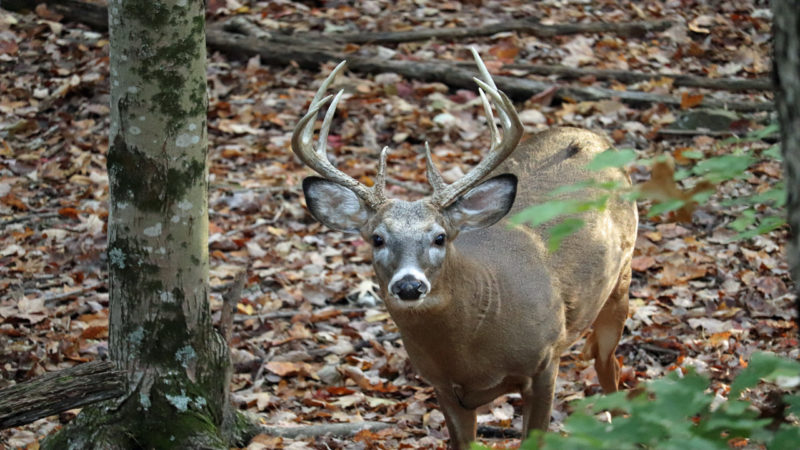
Blind calling has become a staple for my early rut hunts. This is calling you do when there are no deer in sight. It’s intended to attract a buck that’s within earshot, but is hidden behind some thick cover or is just over the top of the ridge out of sight.
In a blind calling sequence do three or four doe bleats, followed by six or seven buck grunts of varying length and speed. After a sequence, wait 20 minutes and then do another. Keep this up for as long as you’re on stand.
Use Deer Scents
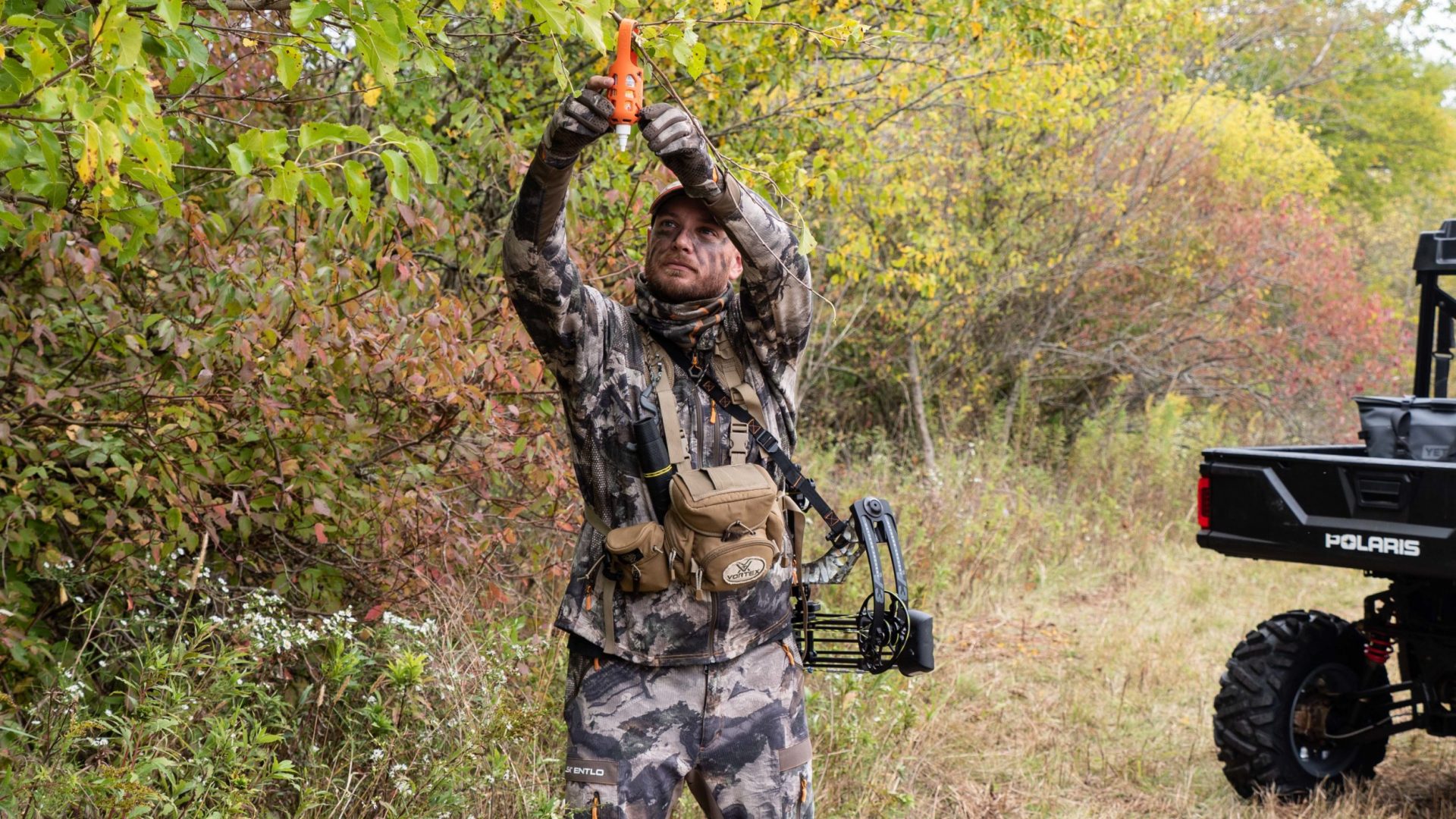
Some hunters ahve often been asked by other bowhunters, “When should I start using buck-lure scents?” For my money, the instant you start seeing buck rubs and deer scrapes in the woods is when you should begin carrying scent lures.
And we specifically say “rubs and scrapes in the woods” because it’s not unusual to find field-edge buck rubs and deer scrapes in the middle of September. These markings often are made once and never visited again and they really don’t seem to have anything to do with rutting activity.
Typically, you don’t see such markings in the timber until the middle of October. And when they show up, start laying scent trails to your tree stands, either by dragging a scent-soaked rag tied to your boot, or by dribbling deer scent from the bottle asyou walk.
When you see a deer scrape, give it a couple of drops from the bottle just to pique the interest of the buck that made it.
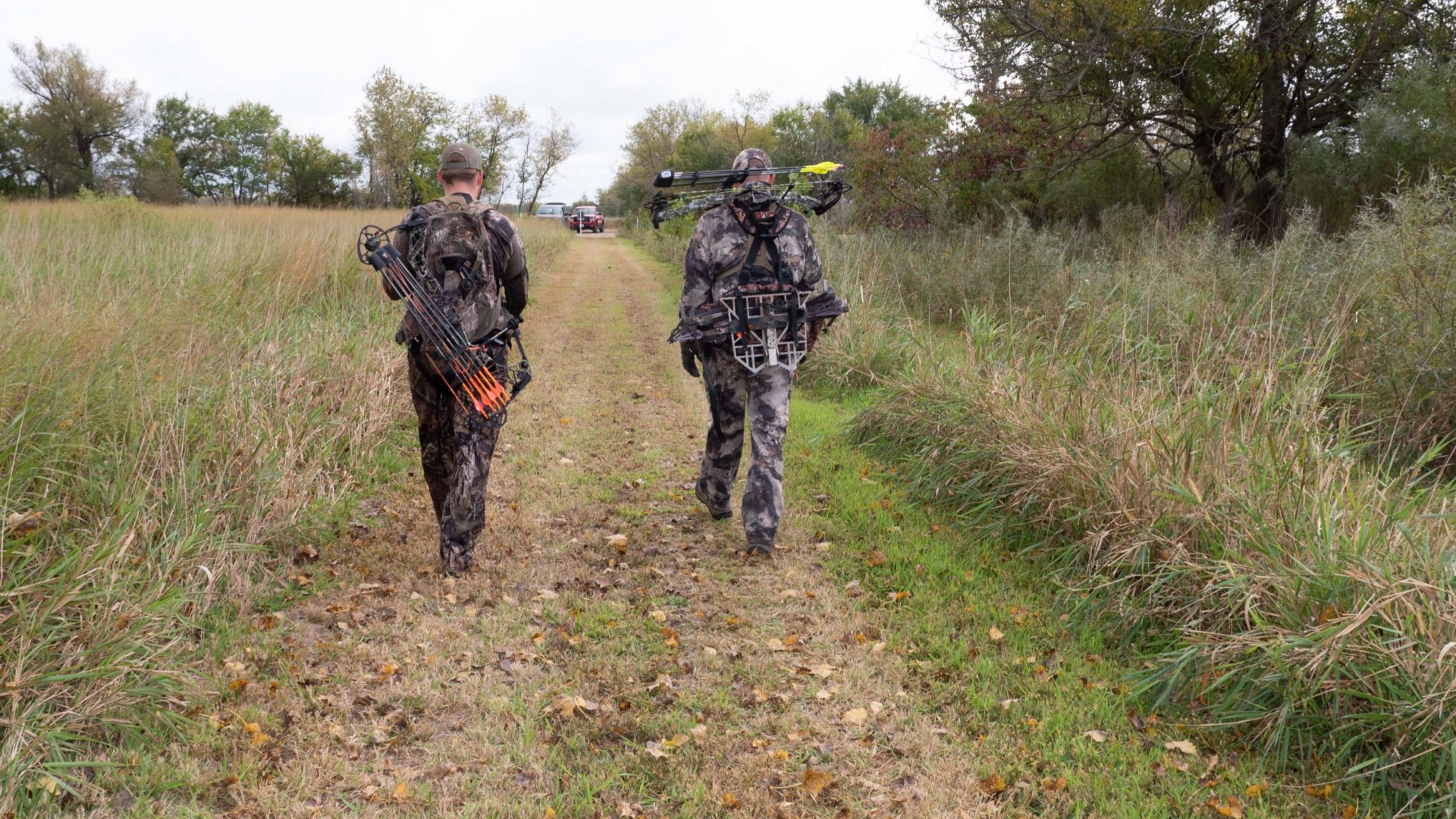
Don’t leave a mile-long scent trail starting at your truck and ending at your tree stand. Normally you don’t want to start a trail any more than about 300 yards from your tree stand. To some deer hunters, it just seems like a waste of product to make the trail any longer.
Once you reach your tree stand, hang a few scent-soaked rags within bow range on all sides of your tree. Hopefully, a buck will follow your trail in to the stand site, and then lock on one of your rags, which are always hung in open shooting lanes.
While the buck is sniffing one of your rags, you will be drawing your bow.
Although the peak rut is often considered the golden time to be in the deer woods, when you look through your bowhunting journals over the years, the pre-rut period has surrendered just as many bucks, if not a few more.
Absolutely, you should reserve some vacation time for the peak rut. But save at least a few days for the early rut. You won’t regret it.

